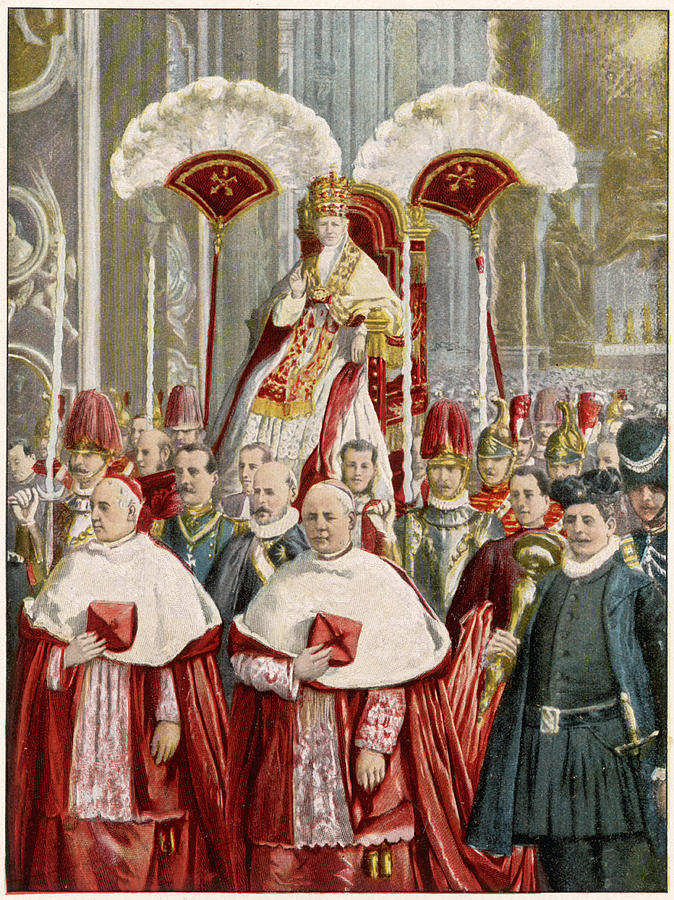 UPDATED: See end.
UPDATED: See end.
Did you know that Canon 16 of the Fourth Council of the Lateran in 1215 forbade priests from playing chess? It was considered a game of chance (clearly by non-chessplayers). That canon also forbade participation of clerics at “the performances of mimics and buffoons” (“walking together”?).
On the other hand, in 1550 St. Teresa of Avila used chess imagery in her spiritual writings. The Church in Spain proclaimed her patron saint of chess players.
I could see having a chess society named after St. Teresa.
A good friend just sent a note with an article in the Los Angeles Herald of 25 June 1899:
PLAYS CHESS WITH THE POPE For Twenty One Years They Have Been Antagonists
In his days of Illness Leo XIII finds his chief amusement in chess. His regular partner is Fr Giulio, a Dominican monk of great wisdom and of sunny temperament, who holds the position of master of games in the Vatican. Fr Giulio was a friend of Leo’s predecessor, Pope Pio Nono, who gave him room and board in the papal palace for life on condition that he learn to play billiards. Pio adopted billiard playing as a means to get rid of much superfluous flesh. At the same time he gave up chess, in which Fr Giulio was an expert, for chess helped to make him fat. Pope Leo has never been bothered with too much flesh, and banished his predecessor’s billiard table to the servants’ quarters when he took up the reins. However, he gladly accepted Giulio’s services as a partner in chess. Pope and monk have now been playing against each other for over 21 years, yet it Is undecided which of the two is the other’s superior. In one respect Leo certainly is, for he never loses his temper together with the game. Fr Giulio, on the other hand, is so passionate a player that he is apt to become morose and get out of patience if the holy father checkmates him. Then Leo has sometimes to speak as Pope — not as a mere friend — to bring the usually even-tempered priest to his senses. When Leo, shortly after his enthronization, introduced the royal game as a regular pastime in the Vatican, some ascetic Cardinals raised an outcry. Invoking the decision of the Council of Treves, which forbade priests to play chess. The Pope listened to these fanatics with a superior smile on his lips. “I know all you want to say,” he remarked. “and I tell you that Bishop Petrus, who first thundered against chess, and the Treves Council, were both mistaken. The latter’s decision soon fell into disuse, and my namesake, Leo X, openly averred that there was no harm in chess playing. Even the fact that Martin Luther, his adversary, was a passionate chess player, made no difference.
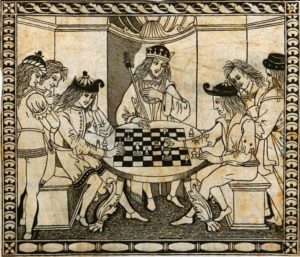
In fact, both the Pope and Luther thundered against games of chance, while practicing chess.” Pope Leo has in his private library a valuable collection of books on chess written by renowned ecclesiastics. Among them is a prayer book by Jacobus de Cessolis, published in the year 1300, containing a number of smart sermons on chess playing. “Rules for Chess” were published by the Spanish Bishop, Ruy Lopez, in 1561, and by the Italian priests Pietro Carrera and Antonio Das Reves, 1617 and 1647, respectively. — New York Journal.
This is also in American Chess Magazine of July 1899 (Vol. 3, No. 1).
Here’s a fascinating synchronicity, amusing and really sad at the same time.
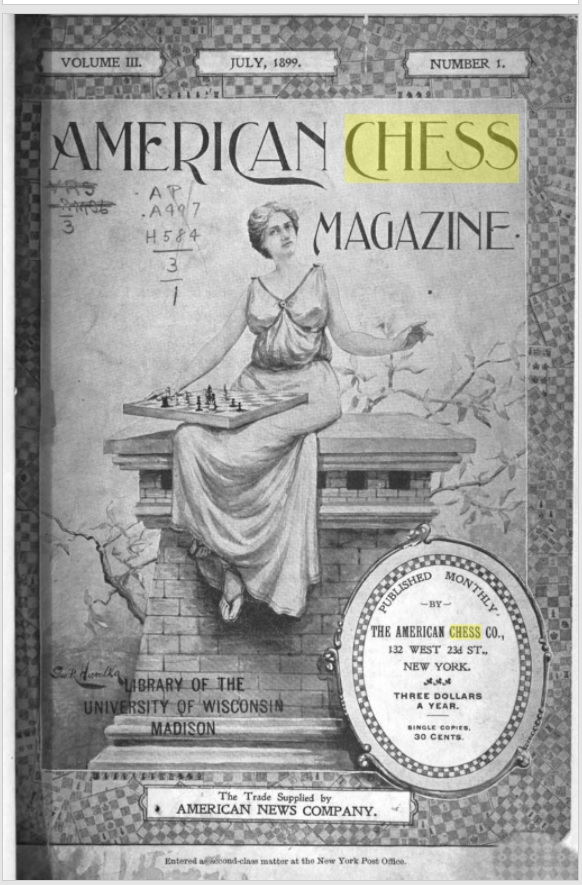
Note the library it came from and note the address where it was published.
I looked at that address and thought… how do I know that? Then it hit me.
132 W. 23rd in Manhattan is by the address of the now closed Church of St. Vincent at 123 W. 23rd, where my good friend Fr. Gerald Murray was pastor and where I used to spend a good deal of time. Here’s the street view from Google for that address:
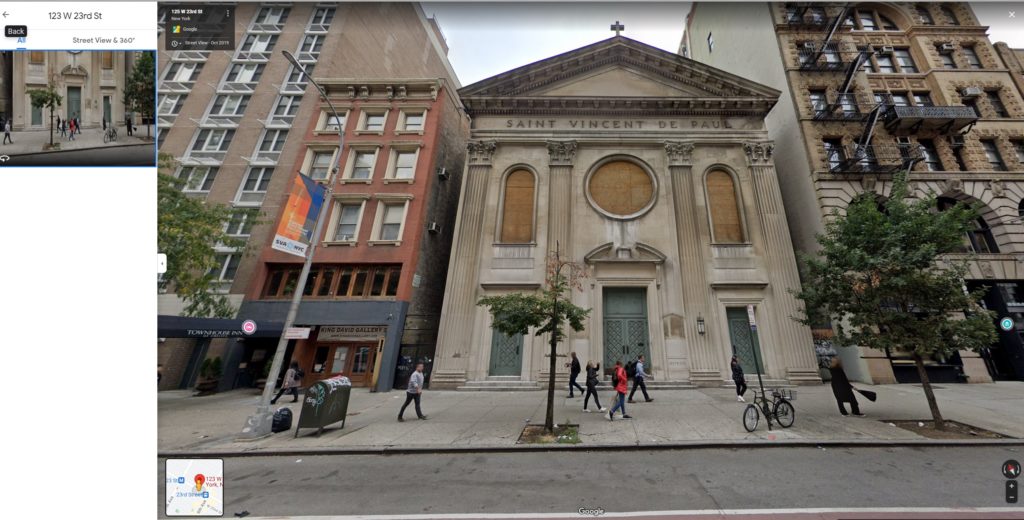
The American Chess Magazine was published at
Jacobus de Cessolis (+c.1322) was the author of Libellus de moribus hominum et officiis nobilium ac popularium super ludo scachorum.
Around 1200, the Bishop of Paris (119-1208), Eudes de Sully (died in 1208), banned chess in Paris to his clergy. He forbade chess sets and chess boards from even being in homes.
Maybe this is the model for the treatment of the Traditional Latin Mass in Paris?
While looking for more on Leo XIII and chess, and also the rumor that John Paul II composed chess problems I stumbled upon this delightful account.
Here’s an account of a meeting of the Brooklyn Chess Club from the 2 Jan 1912, American Chess Bulletin (Vol. 9, No. 1):
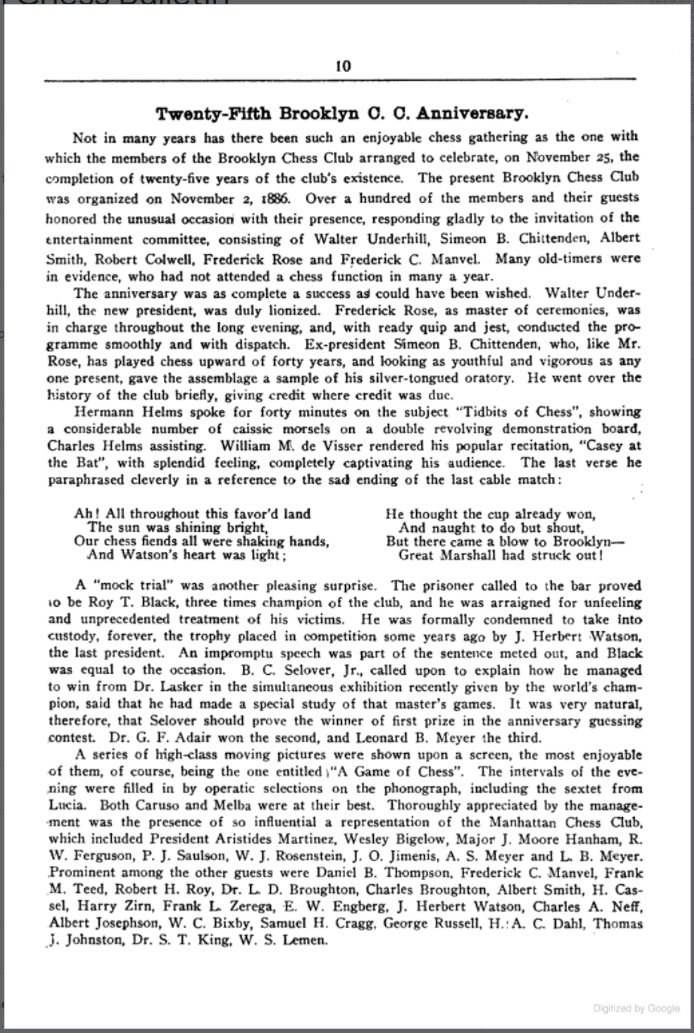
Even with operatic selections on the phonograph! Very high tech.
And for you Star Trek fans, with it’s weird chess board, here is “O soave fanciulla” from La Bohème with Caruso and Melba in 1896.
Is it possible that they also heard this recording in Brooklyn?
From 1996-2001 the Taliban made playing chess illegal. If you were caught, the board was burned and you were jailed.
Again, a possible model for Traditionis custodes (to which some are lending the moniker Taurina cacata).
From a reader…
Saw your post on chess and thought you’d like to see the following.
My ancestors were printers in Brooklyn by trade for a few generations; some also played a bit of chess though I’m told, not so well.
Anyway, I remember being told that the Brooklyn Eagle which turned Into the Brooklyn Daily Eagle published from 1841 till 1955 and was once the largest daily in the US and had a large chess following and is now online has an historical record which is online.
Thought you’d like to know and be able to peruse.
http://www.chessarch.com/excavations/excavations.php?a=1&source=Brooklyn_Daily_Eagle
As Mr. Spock, seemingly the dominator of the weird chess board would say… “Fascinating.”
What a huge archive.
This is enough to remind everyone… everyone… that scripta manent. HERE
Look at THIS!


































Father, did that Canon 16 carry down to anything binding today?
It might be a downer for the Christmas panto, but something that specifically forbids clerics from acting like the back end of a horse might be useful.
Father, I apologize for this long, pretentious comment. [Look at your handle here. Agere sequitur esse?] It took a long time to write, so I don’t want to erase it, in case someone finds it interesting. I’m a professor of history, but I do not dare to set myself up as a teacher of priests, whom I am already awkward around.
Lateran IV was all about determining the boundaries of clergy and laity. A century earlier, at the Concordat of Worms, power of the laity over the Church was reduced, especially the investment of prelates by secular rulers, and Innocent III wanted to go further, and this time protect the reputation of the clergy, by limiting their participation in the culture of lay aristocrats. The priests were forbidden from several secular activities; they could not impose the death penalty, they were forbidden from employing large retinues on grand hunts, due to a ban on clergy owning hounds and falcons, clergy were forbidden from charging fees of any kind, monks were forbidden from receiving money in exchange for entering the cloister, clergy were forbidden from swearing oaths of fealty to lay overlords, without a significant precedent, and it was forbidden to store any kind of ordinary property in churches, except for in emergencies. The goal was to make a clearer distinction between the Church and the world.
The ban on clergy playing chess was part of that. Secular nobility used chess not just as a diversion, but also as tactical training, and a means to gain the respect of other lords. A priest playing chess in the 12th century, would probably be more analogous to priests receiving gifts extravagant gifts from lobbyists today, or going on top-dollar cruises, or joining elite country clubs and golf courses. It was a sign of high status, thus the clergy had to be kept from becoming embedded in the worldly pursuits of the knightly class.
We owe a great deal to the medieval councils. The Church in the West maintained autonomy, whereas the Greeks became completely intertwined with the will of the emperors. The holiness of priests and religious, and their status as spiritual specialists, beyond the taint of societal corruption, brought three hundred years of unity to the Church, with only a few exceptions (like the Cathars, Hussites, and Waldensians, which did not have the strength to survive). When the Church began to slack on allowing the highborn clergy to maintain an unabashedly, aristocratic lifestyle, this unity started to fall apart, partially contributing to the Protestant Reformation.
[In the 90s the Italian bishops told priests not to get mobile phones… just sayin’.]
I learned a new word today; caissic. Google didn’t know the word itself but directed me to a Wikipedia article on Caïssa, a goddess of chess invented by the Italian Renaissance. That’s probably her on the cover of the American Chess Magazine.
The article also states that William Jones, (who famously noted the common origin of Latin, Greek, Sanskrit, and the Germanic languages), also wrote a poem on Caïssa.
I started a St Theresa of Avila Chess Club about a year ago on lichess.org, but it’s mostly for kids. We had a pretty solid weekly tournament going through the winter months. It was good to see how much the kids improved week to week.
Somewhat amusingly, since I discouraged the play of bullet chess among the club members, one of them founded a separate club for that purpose, under the patronage of (you guessed it) St Miguel Pro.
When I lived in Morristown, NJ a distant cousin (in law) moved a few blocks away from me. He was editor of a chess column in the New York Times. At some point in our conversation the name Ken Thompson came up, who I knew as the author of Unix and member of technical staff at Bell Labs where I had worked. My relative had no idea about Unix, etc. but knew him only as an expert chess player. Interesting.
I seem to recall (from reading, or solely from conversations with a learned friend?) that there were mediaeval ‘chess sharps’, whose practice involved eliciting bets on chess problems (and maybe, games as well) – I can’t recall whether there was a ‘chess sharp’-‘goliard’ overlap, though I do remember that that sort of cousin of chess, rithmomachy, was similarly plagued by ‘sharps’ and the gambling-minded, and wonder if that may have been a significant part of the background of Canon 16 – preventing ‘chess abuse’ and temptations to clerical chess players?
[Interesting. Yes, I am sure that chess was lumped together with other board games, including those with dice. Event today, folding chess sets can also have a backgammon side.]
Pingback: FOLLOW UP to “Of Leo XIII, Caruso, and Chess” | Fr. Z's Blog
One should be very careful with backgammon. It’s a good way of losing a perfectly serviceable Baltimore clipper…